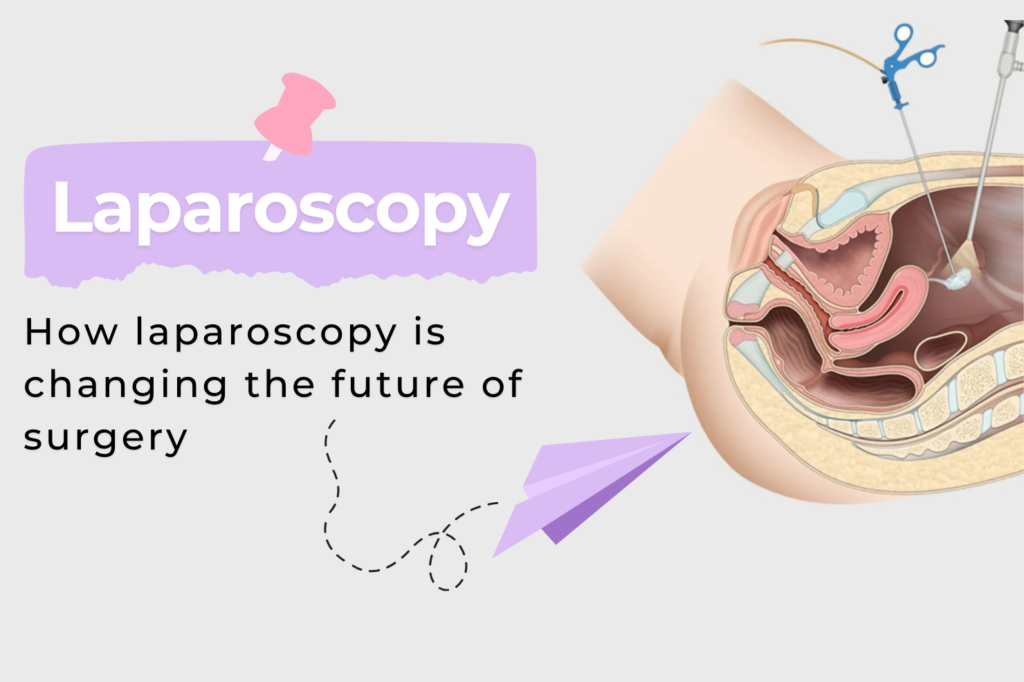In recent years, laparoscopic surgery has emerged as a groundbreaking advancement in the field of medicine, changing the way surgeries are performed and dramatically improving patient outcomes. Traditional surgery, often referred to as “open surgery,” typically requires large incisions that can result in longer recovery times, increased postoperative pain, and a greater risk of complications. Laparoscopy, also known as minimally invasive surgery (MIS), offers a less invasive alternative, allowing surgeons to perform complex procedures with far smaller incisions, reducing trauma to the body and facilitating quicker recovery.
What is Laparoscopy?
Laparoscopic surgery involves the use of a small camera, known as a laparoscope, and specialized surgical instruments, which are inserted through small incisions, typically no larger than 1-2 centimeters. This approach allows the surgeon to visualize the surgical area on a screen in high definition, providing greater precision and accuracy. The tiny incisions used in laparoscopic procedures result in minimal scarring and a reduced risk of infection, two of the major concerns with traditional surgeries.
The benefits of laparoscopic surgery are clear, and its growing popularity is proof of its success. Patients who undergo laparoscopic procedures generally experience significantly less postoperative pain and shorter hospital stays compared to those undergoing open surgery. Recovery times are faster, allowing patients to return to their normal activities sooner, which is particularly important for busy individuals or those with family and work responsibilities.
Key Benefits of Laparoscopic Surgery
- Faster Recovery: Since laparoscopic surgeries are less invasive, patients typically recover much quicker than they would after open surgery. This translates into less time spent in the hospital and a faster return to daily activities, helping patients avoid extended work absences or interruptions to their lives.
- Reduced Pain: Traditional surgeries often involve cutting through muscle and tissue, leading to significant postoperative pain. With laparoscopy, the small incisions minimize the extent of tissue disruption, reducing pain and the need for strong pain medication after surgery.
- Smaller Scars: The tiny incisions used in laparoscopic procedures result in smaller scars, which is a major cosmetic benefit for patients. This is particularly important for those undergoing surgery in visible areas, such as the abdomen.
- Lower Risk of Complications: Laparoscopy reduces the risk of complications such as infections, blood loss, and damage to surrounding tissues. Because the procedure is less invasive, there is also a lower chance of the body rejecting the surgery or developing adhesions (scar tissue that can form after surgery).
- Improved Surgical Precision: Laparoscopy allows surgeons to view the surgical area in great detail through a high-definition camera. This improved visualization enables more precise movements and greater accuracy in performing delicate procedures.
Applications of Laparoscopic Surgery
Laparoscopy is used in a wide variety of medical procedures across many specialties, including general surgery, gynecology, urology, and even bariatric (weight loss) surgery. Common applications include:
- Gallbladder Removal: Laparoscopic cholecystectomy is the most common surgery for removing the gallbladder and is performed through small incisions in the abdomen.
- Hernia Repair: Laparoscopy is increasingly used for repairing hernias, allowing for faster recovery times compared to traditional open hernia surgery.
- Gynecological Procedures: Laparoscopy is commonly used in gynecology for the treatment of conditions like endometriosis, fibroids, and ovarian cysts, with minimal disruption to surrounding tissues.
- Weight Loss Surgery: Laparoscopic techniques are widely employed in bariatric surgeries, such as gastric bypass or sleeve gastrectomy, offering a less invasive alternative to traditional weight loss surgeries.
- Cancer Treatments: Laparoscopy is sometimes used to diagnose and stage certain cancers, such as ovarian or colorectal cancer, and can even be used for some tumor removals.
The Future of Laparoscopy: Robotic-Assisted Surgery
As technology continues to evolve, so too does laparoscopic surgery. One of the most exciting developments in this field is robotic-assisted laparoscopy. Robotic systems, such as the da Vinci Surgical System, allow surgeons to control robotic arms with extreme precision, improving the accuracy and outcome of minimally invasive procedures.
Robotic-assisted laparoscopy offers several advantages, including enhanced precision, better visualization, and the ability to perform more complex surgeries with greater control. This technology also allows for more flexible movements and the ability to make smaller, more precise incisions, leading to even less tissue damage and faster recovery times for patients.
A Word From Hegde Hospital
Laparoscopy has revolutionized the way many surgeries are performed, offering numerous benefits over traditional open surgery. With reduced pain, faster recovery, smaller scars, and fewer complications, it’s clear that minimally invasive surgery is transforming patient care. As technology continues to advance, laparoscopic techniques will only become more refined, and robotic-assisted laparoscopy will continue to push the boundaries of what’s possible in surgery.
For patients considering surgery, laparoscopy offers an innovative and effective alternative that provides better outcomes, quicker recovery, and a less invasive approach. With continued advancements in medical technology, the future of surgery looks brighter than ever.

